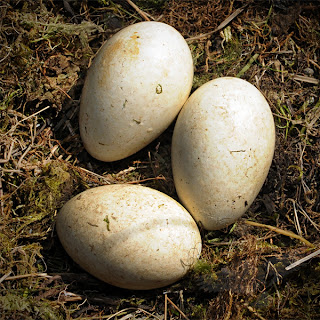Handing my last assignment into the office signified the end of a long university year and the beginning of a nine day photographic expedition. Minutes after handing the paper in, I was heading South down State Highway One full of anticipation and buzzing with excitement.
I planned to spend the first few days around Lake Tekapo, in hope of photographing nesting wrybill, Australasian crested grebes, and of course the rare and endangered black stilts. When I arrived at the campgrounds that evening, I was surprised to spot four rare creatures feeding at the edge of the lake, usually solitary creatures, four wildlife photographers were gathered at the lake's edge. It was nice catching up with Glenda Rees, Craig McKenzie and Tim Rumble & Nick Rumble and we happily chatted the night away about bird photography. The next few days presented opportunities to photograph nesting and brooding wrybill, black stilts and Australasian crested grebes. An elusive marsh crake also made an welcome appearance.
Above: Wrybill nest: Nothing more than a scrape in the ground, a wrybill stands over a solitary egg.
Above: A male wrybill, broods its young chick. Note: The curved bill that gives the wrybill its' name.
Sporting a sideways turning bill, the endemic wrybill
(Anarhynchus frontalis) or ngutuparore is one of New
Zealand’s bird oddities – the only bird in the world with
such a feature. It uses the bill like a hook to gather insect
larvae and eggs from beneath stones, or as a spoon to scoop
crustaceans from mud. It's hard to estimate the population of these small cryptic plovers, wintering flocks suggest a total population of 5000-5500, although counts show
high variability (which obscures trends); unfortunately the population is believed
to be declining.
Brooding Mother: A young chick seeks shelter from its mother.
After a few days around Lake Tekapo, I headed South towards Lake Pukaki, in the hope of photographing New Zealand's original 'All Blacks', the black stilt (Himantopus novaezelandiae), which are an extremely rare endemic bird (found only in New Zealand). Māori call these rare birds Kakī and regard them as a taonga – a living treasure. I always feel extremely fortunate to photograph these birds in their natural habitat. Kakī have black and white plumage until the age of 18 months when they acquire their black plumage. In 1981 kakī numbers declined to a low of just 23 birds, and thanks to the continuing efforts and intensive management their are currently approximately 100 birds.
Above: An adult black stilt in full adult plumage.
Above and below: Two young black stilts mate. Black stilts are known to mate for life.
Above: The male drapes his wing over the female as they cross bills in a stylised mating ritual.
Along with wrybill and black stilts, New Zealand's braided rivers provide important nesting grounds for another of New Zealand's rare and endemic birds, New Zealand's original 'Black Caps', the black-fronted tern. These stylish small terns sport a stunning blue-grey coat which is contrasted by their black cap and bright orange beak and legs. There is an estimated population of between 5,000 - 10,000 individuals. When nesting their diet consists of emerging nymph
and subimago mayflies, fish, earthworms, grass grub larvae and skinks etc.
Above: An adult black-fronted tern in full breeding plumage.
Above: An adult and small chick on the nest, their nests are simple scrapes amongst river stones.
I couldn't venture South without visiting my old friends, the fiordland crested penguins. I arrived a little later on in the nesting season this year, which revealed a different side to these photogenic penguins. Arriving a little later meant that most chicks were close to leaving their nesting sites. It was a thrill to witness a few young, adventurous penguins making their way to the ocean for possibly their first time. For the young penguins the beach was like a playground, the pebbles, boulders, and water provided exiting new experiences.
Above: Holding Hands: Fiordland crested penguins make their way to the ocean after an evening at the nest.
Above: A young fiordland crested penguin strolls down to the beach.
Above: A young adventurous fiordland crested penguin plays in a puddle.
 On the way back to Christchurch, I payed a quick visit to another, perhaps less known New Zealand endemic, the fernbird. Fernbirds inhabit wetlands throughout New Zealand, but are rarely seen
because of their secretive nature.
Fernbirds are closely related to the grassbirds Megalurus of Australia, and can be identified by their loose and tattered fern-like tail.
On the way back to Christchurch, I payed a quick visit to another, perhaps less known New Zealand endemic, the fernbird. Fernbirds inhabit wetlands throughout New Zealand, but are rarely seen
because of their secretive nature.
Fernbirds are closely related to the grassbirds Megalurus of Australia, and can be identified by their loose and tattered fern-like tail.
Regarded as tapu, Māori revered the Fernbird as an "oracle" or "Wise bird" (Manu tohu). The calls of the bird were interpreted as heralding success or failure
in daily activities such as fishing but on a more serious level could
also portend prosperity and health or disaster and death. Fernbirds were also offered as a sacrifice when the Maori returned home from an unsuccessful war. Right: Fernbird with nesting material.
In January 2014, I will be exhibiting some photographs at the Amuri Community Arts Gallery in Hanmer Springs. I will be hanging the exhibition on the 4th of January and will be personally there from the 4th - 6th of January. So if you are up in that direction or feel like a day trip to the picturesque Hanmer Springs come have a look and a chat.
January 2014 | Amuri Community Arts Gallery | Cheltenham St, Hanmer Springs, Hurunui
Below: 2014 Range of Jonathan Harrod Photography business cards.
Thanks for viewing!



















































